Ways to Avoid The Crowds When Travelling
Participating in a popular event can significantly amplify certain travel experiences by adding energy and atmosphere. Conversely, an excessive influx of people can entirely mar a traveler’s day. So if you want to avoid the crowds when traveling and make the most out of your trip, here are some words for you.
While it might appear somewhat antisocial to seek solitude when traveling, evading large crowds offers numerous advantages. The strategies listed below can save you time and money while helping you maintain your well-being on the road. All without necessitating significant sacrifices.
Steering clear of crowded areas serves as an effective countermeasure to deal with over-tourism. This approach can introduce you to more personalized and authentic travel encounters, while also reducing your environmental impact. Opting for lesser-known destinations or popular spots during off-peak seasons aids in distributing tourism revenue more evenly, benefiting small businesses and local communities substantially.
Embracing a philosophy of slow, immersive, and minimalist travel, I consistently strive to steer clear of congested locations. In this post, I’m sharing my top tips for effortlessly avoiding crowds while traveling.
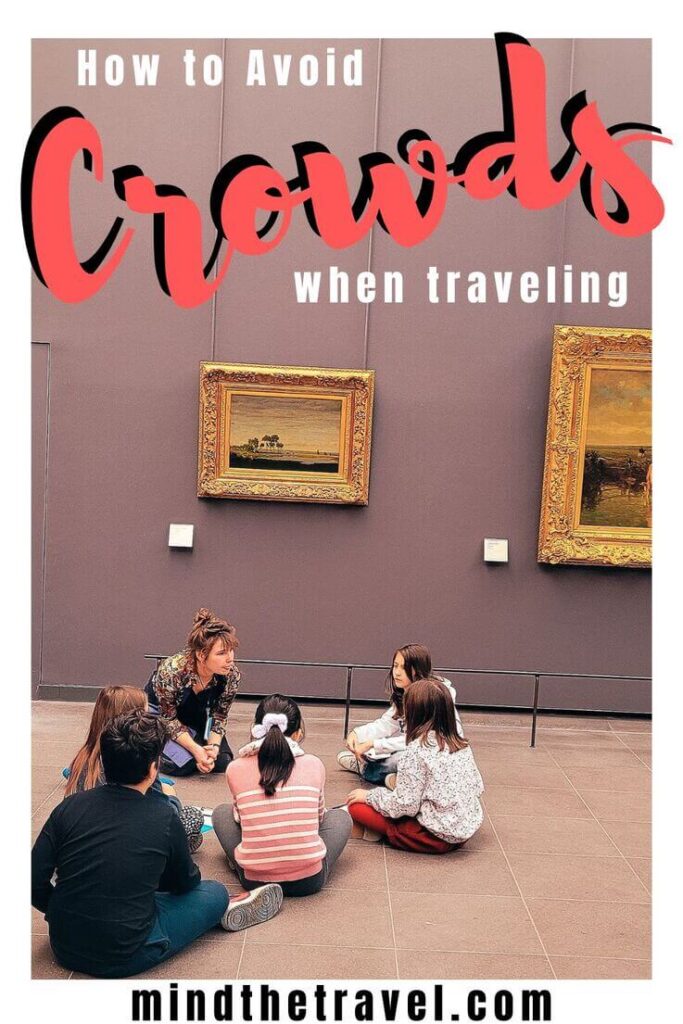
25 Tips to Avoid Crowds When Travelling
When you embark on your next trip, consider incorporating these practical strategies. Many of these tips can be integrated during the planning stage, laying the groundwork for a serene and tranquil travel adventure.
1. Replace ‘Top Attractions’ with ‘Unknown Places’
It may sound straightforward, but opting for lesser-known destinations instead of popular or ‘trending’ ones is one of the simplest ways to avoid crowds when traveling.
The adverse impacts of over-tourism in cities like Rome and New York have been extensively documented. For every iconic city on our bucket list deemed a ‘must-see’ at least once in our lives, there exist numerous lesser-known destinations that are equally deserving of our time. Discovering these hidden gems may require a bit more research, but the payoff is often worthwhile.
Keep in mind that travel trends are transient. Destinations may experience a surge in popularity only to fade from the spotlight just as swiftly. If everyone you know is flocking to any specific city this summer, it might be more sustainable to consider postponing your visit until the following year.
2. Opt For Travel During the Shoulder Season
The term ‘peak season’ holds true for a reason.
During this period, crowds reach their peak, prices soar, and the likelihood of items selling out increases. Whenever I find myself traveling in high season, I invariably detect a more tense atmosphere. In certain locations, a surge in tourist numbers often correlates with an uptick in petty crime.
Across most of Europe, summer stands out as the busiest time of the year, with winter marking the low season. My suggestion: Embrace travel during spring and autumn!
Timing is crucial, and the shoulder season emerges as your ally when seeking to avoid crowds.
In the context of Southeast Asia, do not shy away from traveling during the wet season. It’s wise to steer clear of regions facing full-fledged monsoons, but as my experience living in Phuket revealed, the ‘green season’ actually represents the most pleasant time to explore Thailand.
3. Stay Overnight near Popular Sites
For those seeking to explore well-known attractions without the crowds, spending the night near these sites can be a strategic move. Opting to stay nearby allows for an early start and a head start on beating the rush.
Recently, during a day trip from Prague to Vienna, I aimed to catch the first train of the day. However, I barely secured seats due to the high demand. Upon reaching Vienna, the place was teeming with day visitors.
Had I chosen to stay in Vienna the night prior, I could have risen before the first train of the day arrived, gaining an advantage in outmaneuvering the crowds.
4. Leverage Crowd Calendars
Certain popular attractions, including theme parks, provide online crowd calendars. These resources utilize data from previous years to estimate visitor numbers for the upcoming season. Some offer detailed projections, pinpointing the busiest weeks or even days to expect.
If you have ample time before your trip, consulting crowd calendars can assist you in determining which dates to steer clear of. Even if you don’t plan to visit a theme park, understanding the annual trends can offer insights into when the local area experiences peak visitation.
While it’s true that if everyone adopted this strategy, tranquil days could swiftly transform into bustling ones, utilizing crowd calendars remains an effective way to avoid crowds when you travel.
5. Opt for Walking
While public transportation stands out as a cost-effective and efficient means of navigating a city, it frequently lands you amidst a crowd of fellow commuters.
When feasible, opt for walking instead. Strolling along at street level allows you to observe and appreciate a plethora of details that might otherwise go unnoticed.
6. Rent a Bike
Renting a bicycle not only provides a convenient mode of transportation but also offers unparalleled access to the serene corners of a city or natural areas that may be inaccessible via public transport.
7. Take Into Account Festivals & Events
Participating in a festival or ceremony presents a delightful opportunity to immerse yourself in a different culture. If this ranks high among your travel priorities, you might consider aligning your trip with a special celebration or ritual.
The intensity of festival season varies depending on the context and can either magnify or diminish crowd levels compared to other times of the year. In several cultures, religious festivals signify family moments, prompting individuals to depart major cities and journey back to their hometowns to reunite with loved ones.
Destinations like Beijing during Lunar New Year or Hanoi during Tet tend to be notably serene. However, mobility can pose challenges as public transportation frequently experiences high demand, making ticket purchases a cumbersome task.
It’s worthwhile to ponder major events scheduled years in advance, such as Lunar New Year, along with lesser-known rituals like religious pilgrimages. Additionally, bear in mind that ‘official’ holidays may extend beyond designated dates in practice, stretching out for several days before and after the calendar dates.
8. Purchase Advance Tickets for Popular Attractions Online
Bypassing long queues at major attractions is among the simplest ways to avoid tourist crowds.
Today, the majority of museums, galleries, and historical sites provide the convenience of purchasing tickets in advance, allowing you to skip waiting in line upon arrival.
Online ticket purchases often come with additional benefits, such as discounts, access to local guides, exclusive entry to certain parts of the attraction, and more.
My go-to platform for securing tickets online is Get Your Guide. They boast an extensive array of options at competitive prices, a user-friendly app (eliminating the need to print tickets), and a highly adaptable cancellation policy.
9. Utilize Google’s ‘Popular times’ Feature
One of the handy tools I rely on to avoid crowds while traveling is Google’s ‘Popular times’ graph. Similar to a crowd calendar, this feature analyzes user data to display the busiest days of the week and, conveniently, peak times throughout the day for restaurants, museums, stores, and other venues.
While not universally available, a brief internet search can help you determine if this data is accessible for your destination.
To access the graph, simply search for the name of the business on Google. On desktop, you’ll find it in the right-hand panel of the search results page. On mobile devices, you can locate the graph on the business page within Google Maps.
The blue bars indicate the hours of highest traffic. Additionally, it provides details on the average wait times at restaurants and cafes, as well as the typical duration people spend at these venues.
10. Forego the Complimentary Tour
Although I love free city tours, I tend to forego them when seeking to avoid crowds. Why? These tours are typically well-liked, leading to significant foot traffic. Moreover, they often visit the most heavily frequented spots in a city during peak hours.
Instead, I recommend investing in a paid tour. Opting for a more personalized itinerary increases the likelihood of having the guide to yourself or being part of a small, intimate group. When making tour reservations, always verify if there is a limit on group size. I aim to steer clear of tours with group sizes exceeding 10 people.
11. Engage a Personal Guide
Engaging a private guide stands out as a simple method to explore lesser-known areas of a city or town, moving beyond the typical tourist spots.
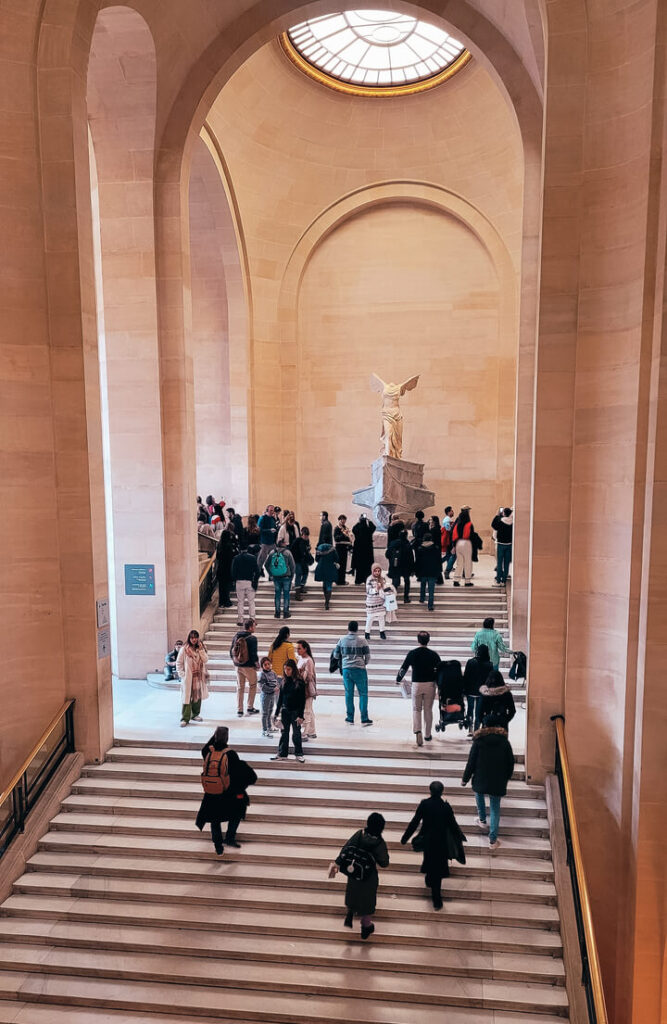
Personal guides usually offer more flexibility when it comes to selecting the tour’s start time. They also enable you to avoid the crowds by setting out before or after the peak hours.
12. Ask a Resident to Avoid The Crowds When Travelling
Local insight is invaluable. If hiring a private guide is beyond your budget, consider browsing online for itineraries penned by local bloggers or simply inquire about recommendations upon your arrival.
It’s important to remember that locals often frequent places that may not be on the typical tourist trail, especially in larger cities. I’ve had numerous instances where seeking advice from a lodging host or bartender led me to discover an intriguing, crowd-free area of the city.
13. Rely on Google Maps for Dining Recommendations Instead of TripAdvisor
While there’s nothing inherently wrong with TripAdvisor, the platform tends to highlight more tourist-centric establishments. For discovering less-crowded restaurants, bars, and cafes, consider using Google Maps instead.
In my personal experience, Google Maps excels at presenting local suggestions as it is a platform commonly used by residents. Upon arriving at a new destination, I typically mark my accommodation and virtually explore the neighborhood, clicking on icons to view establishments with high star ratings. I then save any promising options for future reference.
There one thing to keep in mind, however. Often, bustling restaurants are deemed safer in terms of hygiene and tend to serve exceptionally delectable dishes! Hence, I recommend scoping out eateries during ‘peak eating times’ and returning earlier or later if you wish to avoid crowded dining areas.
14. Modify Your Dining Schedule
You can enjoy the best of both worlds! When aiming to steer clear of dining during peak hours, familiarize yourself with the typical daily routines and attempt to schedule your meals before or after the busiest dining periods.
In essence, opt for dining at places frequented by locals but at different times than when they usually dine.
During my travels, I typically begin the day with a light breakfast at my accommodation and have a substantial meal later on, coinciding with the opening hours of restaurants or cafes. By being among the first customers, I finish my meal before the lunchtime rush begins.
15. Avoid Crowds While Traveling by Opting For Food Delivery
The advent of food delivery apps has significantly evolved in recent years. If you strive to avoid bustling restaurants, consider opting for delivery services instead.
The array of apps varies across different countries. Upon reaching a new destination, adjust your phone’s location settings and explore the top downloads in your vicinity on the app store to identify the most prevalent services.
Keep in mind that certain restaurants and cafes provide direct delivery options through their pages on social media or website to counterbalance the fees imposed by third-party apps charge.
16. Bring Your Own Water and Snacks
To sidestep crowded malls and grocery stores, consider preparing your snacks before embarking on a day of exploration.
Traveling with a reusable water bottle and opting for non-prepackaged snacks also serves as an excellent method to reduce your consumption of single-use plastics.
17. Determine the Arrival Times of Cruise boats/tour Buses
When heading to a destination with a cruise port or a renowned site that attracts numerous tour groups, try to ascertain the typical time when crowds begin to converge.
During my recent journey around Northern France, upon reaching Lille, I discovered a number of affordable Flixbus routes to Germany.
Consulting my Airbnb host, I inquired about the bus timetable. As per his insights, they operated like clockwork, with travelers departing to Germany several times a day.
I strategically organized my itinerary around this information, successfully steering clear of encountering large groups.
18. Rise and Shine
A simple yet effective ways to avoid the crowds while traveling is by waking up early and stepping out promptly. I particularly relish early morning walks while traveling, especially in bustling urban centers. During these times, traffic tends to be lighter, there are fewer individuals around, and the lighting is often more favorable for photography.
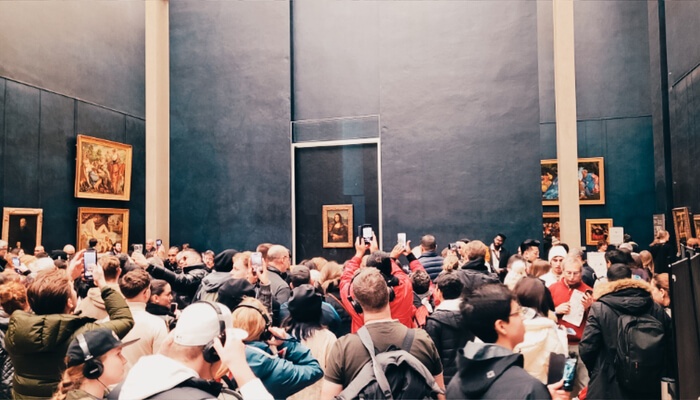
In the early hours, cities exude a more authentic local ambiance. Furthermore, starting your day early allows you to maximize your itinerary and squeeze more experiences into your schedule.
19. Utilize Siesta Hours
In numerous countries, it’s a cultural norm to observe an extended break in the middle of the day for lunch. During this time, businesses shutter their doors, individuals head home for meals, and the streets become deserted. This presents an ideal opportunity to capitalize on the tranquility and explore at your leisure.
During a layover in Barcelona, I discovered that most local markets are closed for several hours in the peak heat of the day. Roaming through the alleyways and stalls, I found myself alone in the entire marketplace—products neatly displayed, yet not another person in sight.
20. Steer Clear of Rush Hours
Rush hours vary significantly from country to country and city to city, contingent upon regular working hours.
By determining the local peak hour timing, you can effortlessly evade navigating the roads during the most crowded times of day.
Minimizing time spent in traffic and conserving energy while sidestepping bustling sidewalks ensures you have ample stamina for your exploration.
21. Comprehend Domestic Tourism Patterns
Domestic tourists exhibit distinct travel inclinations compared to international travelers — consider how your approach to planning a trip within your home country differs from planning international travel.
Peak season for local travel may coincide with low season, influenced by factors such as public holidays, school breaks, and various other considerations.
The simplest way to avoid crowds of domestic tourists involves conducting preliminary research on the local calendar. Determine the timing of school holidays, major public holidays, and extended weekends to better anticipate potential periods of heightened domestic tourism.
22. Opt for Local Neighborhoods over Tourist Hotspots
In every city, certain neighborhoods attract a swarm of tourists. However, you can always explore lodging alternatives beyond these popular areas.
Extending your accommodation search beyond the central zones offers numerous advantages:
- More affordable prices;
- Distinctive property options;
- Budget-friendly dining choices;
- If you’re situated on the outskirts rather than the city center, you’ll likely encounter fewer crowds.
Consider utilizing platforms like Airbnb or Booking.com to discover unique apartments. It’s crucial not to venture too far out. Always verify the location on Google Maps to ensure you can conveniently access the desired sites either by public transport or on foot.
23. Select Your Airport Strategically
During international trip planning, travelers often focus solely on flights into the capital without exploring other possibilities.
Have you considered an alternative nearby airport? Opting for a smaller city airport can help you sidestep crowds and steer clear of the hustle and bustle of the capital.
In regions like Western Europe with robust rail networks or the Balkans with short travel distances, it might even prove advantageous to fly into a neighboring country and then continue your journey to the ultimate destination.
24. Leverage an App for Expedited Passport Control
Navigating through airport crowds can be challenging, especially during transit, where you often find yourself amidst a sea of fellow travelers waiting in queues.
Several mobile apps now offer expedited airport immigration services. For instance, Mobile Passport (available in the US and Canada) enables you to pre-submit your travel documents, allowing you to breeze through immigration via the express lane.
25. Travel Light
Embracing a minimalist approach to packing comes with numerous perks, such as cutting down on baggage expenses and simplifying your airport journey.
Opting for carry-on luggage only can also assist in avoiding airport crowds: Simply disembark the plane and head straight out, bypassing the baggage carousels.
Final Thoughts on How to Avoid The Crowds When Travelling
There are plenty of straightforward measures you can implement to avoid crowds when travelling. Do you have any additional advice or tips to share? Feel free to drop them in the comments below.


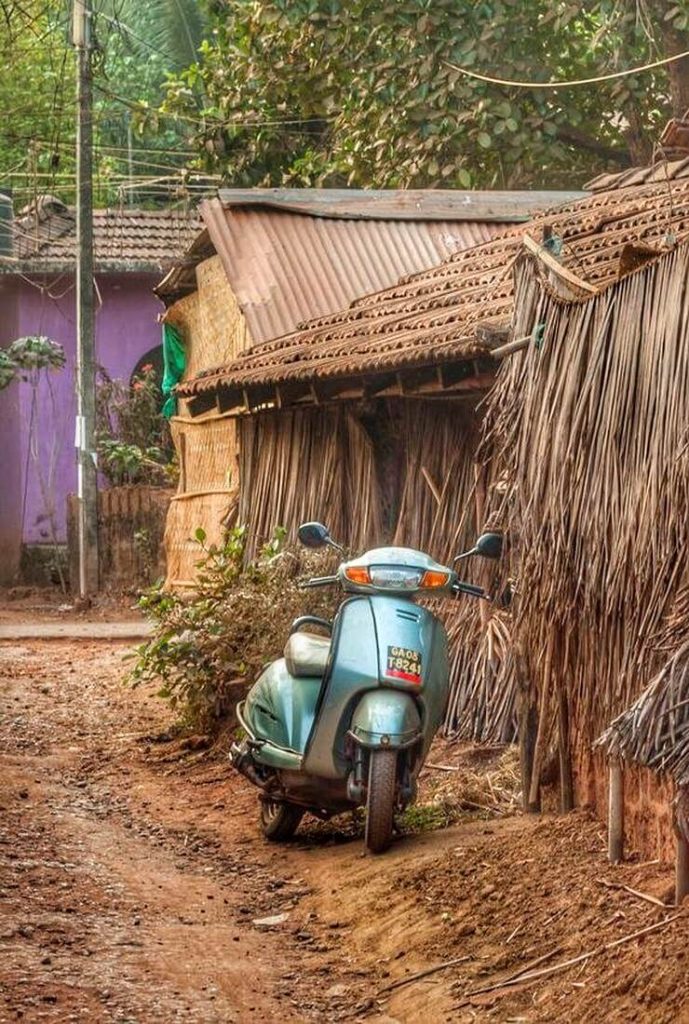
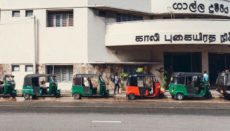
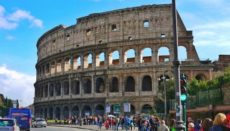

Susie Lindau
I made the cruise mistake. It never occurred to me to check! Great tips.